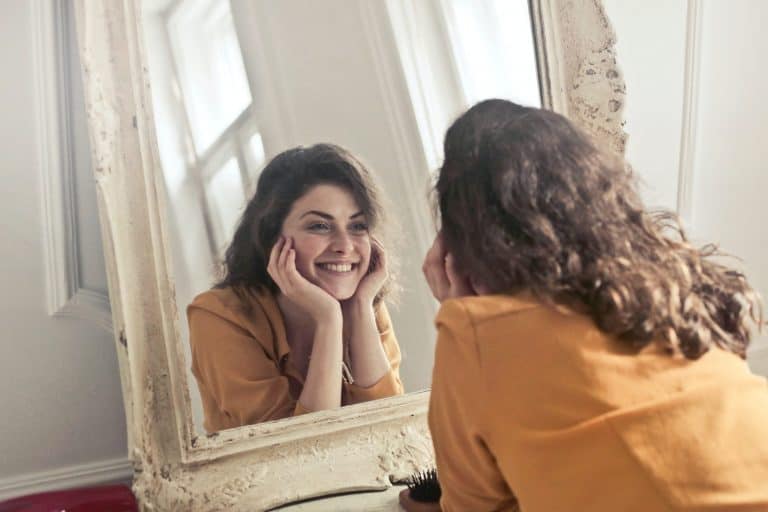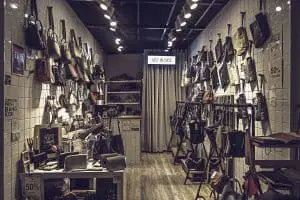Introduction
There is no business like the fashion business. When we buy a fashion product we do so, as the result of a very wide list of reasons, that span from the most rational to the most emotional. This poses a challenge for marketers as consumer behaviour in the fashion industry presents some unique features that make this industry different from all the rest.
We’ve done a bit of research to really compare and contrast the different logical and emotional sides of customer behaviour to understand how to luxury segment presents a set of unique characteristics, according to which, traditional frameworks don’t exactly apply.
In this post, we’re going to discuss how the luxury sector may respond to logics that are almost counterintuitive to the marketer, to the point of defying the laws of demand and supply, In order to help you navigate the post, and find the information you are looking for we’ve divided the topic into these four sections. Enjoy!
- Why the traditional purchase decision model does not apply to luxury.
- Understanding the emotional side of luxury in the fashion business.
- Leveraging the power of emotions in fashion marketing.
- Conclusions
1. Why the traditional purchase decision model does not apply in luxury.
Traditional consumer behavior would normally approach the purchase intent of fashion customers based on a 5-step strategy which we have discussed in other posts such as this one, but the truth is that fashion purchases have a stronger-than-average emotional bias and this makes the purchase decision process model work in a much more limited way. If we look at each, we can see that the purchase decision model does not apply very easily to luxury goods: let’s see each stage in detail.
- The recognition of a need. Based on Maslow’s hierarchy of needs, we should assume that people purchase fashion products to shelter themselves from the elements, but of course, this is not the case. The recognition of a need in luxury is usually something which is linked to one of two things: either fitting in, which means that we feel to get a sense of belonging to a social group because of our clothing choices or alternatively to stand out, which relates to the idea of using fashion to detach ourselves from the crowd, because of the uniqueness of our style. Because of the nature of these needs, we can understand that they are created most of all by social cues, which relate to interpersonal interaction and cannot be triggered as easily as other types of need.
- The research stage. The research stage is the stage where customers collect data and information to identify what type of product gets the job done. However, the research stage in luxury is quite challenging because in many cases the concept of luxury is entwined with the concept of scarcity. As a result, not a lot of information can be made available from the companies, as a lot of the luxury component comes from the unseen. If you shine a light on what makes something special you could draw away the magic, which is instead very much a focal point of the whole purchase experience.
- The evaluation of alternatives. The evaluation of alternatives is also a challenging time. First and foremost luxury brands are few, and don’t lend themselves to the easy comparison. Each luxury brand has a very clear and defined identity system which cannot be compared “apples to apples” to competitors in the same market segment. In this sense, a customer can easily identify all the points of parity (all of the features that are required to compete in the market) but maybe in a tough spot to identify the points of difference (any element of differentiation that can help the business stand out).
- The purchase decision. Because of what we have discussed, it can be very difficult to understand what is the actual customer journey that leads to the moment of purchase. Given the many unknown variables involved it can be difficult for brands to identify what types of touchpoints should be made available to customers in order to support their purchase intent and develop the right distribution strategy and customer relationship management approach. This challenge may then lead companies to develop store experiences which fit the two essential models of purchase intent: planned purchases and impulse buying. We address these retail management strategy in further detail in this post from our blog.
- The post-purchase stage. At this point, we get to the stage where customers have bought the product and are experiencing the brand promise. In this context, we need to remind ourself that the post-purchase experience is entirely subjective, as it is connected to the social validation that the luxury product provides. Luxury is about exclusivity, so the perception of uniqueness and scarcity are really important factors in this stage of the purchase process, and firms may need to operate onto these variables to maximise the positive outcome of this purchase stage.
So let’s now move to breaking down the subject further and identifying more of the elements that contribute to the understanding of consumer purchase intent in luxury.
2. Understanding the emotional side of luxury in the fashion business.
Let’s now look in more detail into how the emotional dimension of our customers plays a role in their decision-making processes. Customers may decide to purchase according to two distinct sets of reasons: logic or emotion.
- Logic-driven purchase. If customers act on the grounds of logic, the decision to buy is based of a comparison of benefits and costs. Ideally, in a logical decision, customers weight against each other all the reasons why to buy or not to buy a product and decide based on the principle of maximising value, while minimizing the cost. In retail, the model that these customers follow is the model of planned purchasing. The planned purchase customers are those who will be more likely to follow the traditional approach to purchasing decision making, as this dimension of shopping relies on extensive research and information collection.
- Emotion-driven purchase. If customers buy instead on the grounds of emotion, they are subject to a gut feeling that bypasses their rational reasoning. This gut feeling is the reaction that a brand is able to summon in the customer because of branding. A strong branding strategy can help you maximise the opportunity to convert costumes who are more susceptible to this shopping dynamic and convert a higher volume of impulsive buyers. If this is a topic you are interested in reading more about, here’s our full-lenght article on developing a branding strategy for your fashion firm.
Not all of the decisions we make are 100% one or the other, but surely a logical or emotional dimension will prevail on the other. This division is, as we have discussed important criteria to design shopping experiences both in physical and digital retail. In general, the emotional leverage works best in physical stores, because of the limitations they provide:
- UrgencyScarcity. The customer needs to buy within a specific time frame, simply limited by the store’s opening hours, knowing that shops may have a limited inventory, and missing out on the opportunity to purchase may lead to regret.
- Developing a mood or store atmosphere. At the same time, emotions can be described as short and intense and even if they may be able to push the customer to an instinctual purchase, these emotions last for very short windows of time, making it difficult for the retailer to always convert the customer who is experiencing them. This is the reason why, in physical stores, rather than on emotions, which are difficult to tackle, store managers work towards building a store mood, or atmosphere. A mood can really help us keep our mind off the pros vs. cons comparison and get us to buy more, as our mood distracts us from reflecting in too much detail on whether we need to buy something necessarily. Developing a store atmosphere that generates higher volumes of sales is no simple task, if you’d like to read more about this, we address this topic in greater detail in this post.
As a result of what we’ve discussed the role of emotions is key to understanding the customer and how to make decisions that help to attract, converting and retaining new clients to our business. Let’s now move to a broader angle on this topic to analyse the role of emotions in luxury, and how marketers can leverage this element in advertising.
3. Leveraging the power of emotions in fashion marketing.
Moving lastly to a big picture perspective we can look into how emotions are leveraged in advertising and communication. In general terms, the goal for a brand is to initially develop a series of strong associations between the brands and the values that better resonate with your audience. In the famous framework developed by Saatchi and Saatchi, you want to make your brand a lovemark, and not a hatemark.
- Lovemarks. A lovemark is a company which was able to develop a strong connection to its audience, to the level of creating almost a personal relationship between the company and the consumer. This relationship allows then to project onto the brand a series of feelings and emotions, which are similar to the ones experienced in interpersonal relationships and are synonym with high brand loyalty and attachment to the company’s values.
- Hatemarks. As opposed to lovemarks, hatemarks become marks which are stigmatised by customers for creating disappointment in customer’s experiences. A brand can much more easily become a hatemark as opposed to a lovemark, as hatemarks can be created by simply mismanaging public relations.
As a sidenote, public relations offices in brands are a centerstage figure in the development of a luxury brand, and their role cannot be downplayed. If you’re interested in reading more about the role of PR offices in fashion and luxury brands here’s an article for you.
The central pillar of fashion advertising, when it comes to emotions, is the focus on desire. Desire has specific characteristics which we should look into more accurately:
- Desire as a positive state. In advertising, desire has an entirely positive connotation which is connected to identity and exploring one’s interests to come to a better understanding of one’s identity.
- Desire as a result of interpersonal relationship. Desires are most felt when they are shared, there is an innate need to share our desires and use them to describe what matters for us, as individuals within the society.
- Desire is different for each category of customers. Desires differ from person to person, brands need to therefore always develop a clear understanding of the customers they are communicating with a strong behavioural profiling of their audience. We discuss customer segmentation in depth in this article.
All in all, emotions are an essential piece of the puzzle when developing your luxury brand, and considering their role in luxury is essential to have a clear understanding of many core decisions that a brand needs to make. We’ll now move towards conclusions to wrap up and summarise the topic.
4. Conclusions
In this post, we delved into the role of emotions in luxury to identify some of the levels at which emotions play a role and can impact customer behaviour at three essential levels:
- During the purchase decision process, by altering the way we experience the traditional 5-step approach to purchase. Taking into account your customer’s emotions allows for a better customer journey planning and development of customer touchpoints.
- In customer store experiences, by profiling customers into shopping intent, which can either be more logical or planned, or more emotional and instinctual. Emotions and moods should therefore be considered by store managers to allot shelf shape, make visibility decisions, divide the store into hot and cold zones as well as develop a signature store atmosphere.
- In luxury advertising, by developing a branding strategy designed to make customers build a personal relationship of attachment to the company. This ultimately leads to customer loyalty and the increase in a company’s goodwill.
Luxury brands should therefore always bear in mind the strong impact that emotions and impulse play in the luxury industry, to make sure that they are able to reap the benefits that come from a correct communication of their collections and products.







